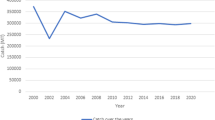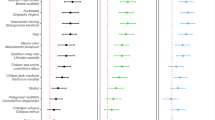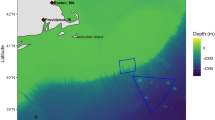Abstract
Poaching renders many of the world’s marine protected areas ineffective. Because enforcement capacity is often limited, managers are attempting to bolster compliance by engaging the latent surveillance potential of fishers. However, little is known about how fishers respond when they witness poaching. Here, we surveyed 2,111 fishers living adjacent to 55 marine protected areas in seven countries and found that 48% had previously observed poaching. We found that the most common response was inaction, with the primary reasons being: (1) conflict avoidance; (2) a sense that it was not their responsibility or jurisdiction; and (3) the perception that poaching was a survival strategy. We also quantified how institutional design elements or conditions were related to how fishers responded to poaching, and highlight ways in which fishers can be engaged while mitigating risks. These include emphasizing how poaching personally affects each fisher, promoting stewardship and norms of personal responsibility and poverty alleviation to reduce the need for fishers to poach for survival.
This is a preview of subscription content, access via your institution
Access options
Access Nature and 54 other Nature Portfolio journals
Get Nature+, our best-value online-access subscription
$29.99 / 30 days
cancel any time
Subscribe to this journal
Receive 12 digital issues and online access to articles
$119.00 per year
only $9.92 per issue
Buy this article
- Purchase on Springer Link
- Instant access to full article PDF
Prices may be subject to local taxes which are calculated during checkout




Similar content being viewed by others
References
Kelleher, G., Bleakley, C. & Wells, S. (eds) A Global Representative System of Marine Protected Areas Vol. 3 (World Bank, 1995).
Mora, C. et al. Coral reefs and the global network of marine protected areas. Science 312, 1750–1751 (2006).
Rife, A. N., Erisman, B., Sanchez, A. & Aburto-Oropeza, O. When good intentions are not enough … Insights on networks of "paper park" marine protected areas. Conserv. Lett. 6, 200–212 (2013).
McClanahan, T. R. Is there a future for coral reef parks in poor tropical countries? Coral Reefs 18, 321–325 (1999).
Lundquist, C. J., & Granek, E. F. Strategies for successful marine conservation: integrating socioeconomic, political, and scientific factors. Conserv. Biol. 19, 1771–1778 (2005).
Byers, J. E., & Noonburg, E. G. Poaching, enforcement, and the efficacy of marine reserves. Ecol. Appl. 17, 1851–1856 (2007).
Gill, D. A. et al. Capacity shortfalls hinder the performance of marine protected areas globally. Nature 543, 665–669 (2017).
Public urged to report suspected illegal fishing and help protect the Reef. GBRMPA http://gbrmpa.gov.au/media-room/latest-news/compliance/2016/public-urged-to-report-suspected-illegal-fishing-and-help-protect-the-reef (15 December 2016).
Green, E. K. Judging the effectiveness of anti-poaching hotlines. J. Rural Soc. Sci. 31, 1–15 (2016).
Kohn, S. M. Monetary rewards for wildlife whistleblowers: a game-changer in wildlife trafficking detection and deterrence. Environ. Law Report. 46, 10054–10070 (2016).
Cinner, J. E. et al. Transitions toward co-management: the process of marine resource management devolution in three east African countries. Glob. Environ. Change 22, 651–658 (2012).
Cinner, J. E., & McClanahan, T. R. A sea change on the African coast? Preliminary social and ecological outcomes of a governance transformation in Kenyan fisheries. Glob. Environ. Change 30, 133–139 (2015).
Defenders of the earth: Global killings of land and environmental land defenders in 2016 Global Witness https://www.globalwitness.org/en/campaigns/environmental-activists/defenders-earth (2017).
Henrich, J. et al. Costly punishment across human societies. Science 312, 1767–1770 (2006).
Rustagi, D., Engel, S. & Kosfeld, M. Conditional cooperation and costly monitoring explain success in forest commons management. Science 330, 961–965 (2010).
Hofstede, G. Culture’s Consequences (Sage, Beverly Hills, 1980).
Ting-Toomey, S. Intimacy expressions in three cultures: France, Japan, and the United States. Int. J. Intercult. Rel. 15, 29–46 (1991).
Oyserman, D., Coon, H. M. & Kemmelmeier, M. Rethinking individualism and collectivism: evaluation of theoretical assumptions and meta-analyses. Psychol. Bull. 128, 3–72 (2002).
Afflerbach, J. C., Lester, S. E., Dougherty, D. T. & Poon, S. E. A global survey of "TURF-reserves", Territorial Use Rights for Fisheries coupled with marine reserves. Glob. Ecol. Conserv 2, 97–106 (2014).
Mulder, L. B., van Dijk, E., De Cremer, D. & Wilke, H. A. M. Undermining trust and cooperation: the paradox of sanctioning systems in social dilemmas. J. Exp. Soc. Psychol. 42, 147–162 (2006).
Chen, X. P., Pillutla, M. M. & Yao, X. Unintended consequences of cooperation inducing and maintaining mechanisms in public goods dilemmas: sanctions and moral appeals. Group Process. Intergroup Relat. 12, 241–255 (2009).
Decaro, D. A., Janssen, M. A. & Lee, A. Synergistic effects of voting and enforcement on internalized motivation to cooperate in a resource dilemma. Judgm. Decis. Mak. 10, 511–537 (2015).
Arias, A., Cinner, J. E., Jones, R. E. & Pressey, R. L. Levels and drivers of fishers’ compliance with marine protected areas. Ecol. Soc. 20, 19 (2015).
Abrahamse, W. & Steg, L. Social influence approaches to encourage resource conservation: a meta-analysis. Glob. Environ. Change 23, 1773–1785 (2013).
Alexander, S. M., Armitage, D., & Charles, A. Social networks and transitions to co-management in Jamaican marine reserves and small-scale fisheries. Glob. Environ. Change 35, 213–225 (2015).
Mbaru, E. K., & Barnes, M. L. Key players in conservation diffusion: using social network analysis to identify critical injection points. Biol. Conserv. 210, 222–232 (2017).
Matthies, E., Klöckner, C. A., & Preißner, C. L. Applying a modified moral decision making model to change habitual car use: how can commitment be effective? Appl. Psychol. 55, 91–106 (2006).
Tyler, T. R. Social justice: outcome and procedure. Int. J. Psychol. 35, 117–125 (2000).
Cohen-Charash, Y., & Spector, P. E. The role of justice in organizations: a meta-analysis. Organ. Behav. Hum. Decis. Process. 86, 278–321 (2001).
Barrett-Howard, E. & Tyler, T. R. Procedural justice as a criterion in allocation decisions. J. Pers. Soc. Psychol. 50, 296–304 (1986).
Lind, E. A. & Tyler, T. R. The Social Psychology of Procedural Justice (Springer, 1988).
Cinner, J. E. et al. Winners and losers in marine conservation: fishers’ displacement and livelihood benefits from marine reserves. Soc. Nat. Resour. 27, 994–1005 (2014).
Gurney, G. G., Pressey, R., Cinner, J., Pollnac, R., & Campbell, S. J. Integrated conservation and development: evaluating a community-based marine protected area project for equality of socioeconomic impacts. Phil. Trans. R. Soc. B 370, 20140277 (2015).
De Cremer, D. Procedural and distributive justice effects moderated by organizational identification. J. Manag. Psychol. 20, 4–13 (2005).
Tyler, T. R. Why People Cooperate (Princeton Univ. Press, Princeton, 2010).
McSkimming, M. J., & Berg, B. L. Motivations for citizen involvement in a community crime prevention initiative: Pennsylvania’s TIP (Turn in a Poacher) program. Hum. Dimens. Wildl. 13, 234–242 (2008).
Lippert, R., & Wilkinson, B. Capturing crime, criminals and the public’s imagination: assembling crime stoppers and CCTV surveillance. Crime Media Cult. 6, 131–152 (2010).
Bursik, R. J. & Grasmick, H. G. Neighborhoods and Crime: The Dimensions of Effective Community Control (Lexington Books, Maryland, 1993).
Report to The Nations on Occupational Fraud and Abuse (ACFE, 2014).
Cox, M., Arnold, G. & Villamayor, S. A review of design principles for community-based natural resource management. Ecol. Soc. 15, 38 (2010).
Turner, R. A. et al. Trust, confidence, and equity affect the legitimacy of natural resource governance. Ecol. Soc. 21, 18 (2016).
Halpern, D. Social Capital (Polity, Cambridge, 2005).
Jones, N., & Clark, J. R. A. Social capital and climate change mitigation in coastal areas: a review of current debates and identification of future research directions. Ocean Coast. Manage. 80, 12–19 (2013).
Gutiérrez, N. L., Hilborn, R. & Defeo, O. Leadership, social capital and incentives promote successful fisheries. Nature 470, 386–389 (2011).
McConney, P., & Pena, M. Capacity for (co)management of marine protected areas in the Caribbean. Coast. Manage. 40, 268–278 (2012).
Pomeroy, R. S., & Berkes, F. Two to tango: the role of government in fisheries co-management. Mar. Policy 21, 465–480 (1997).
McClanahan, T. R., Graham, N. A. J., Wilson, S. K., Letourneur, Y. & Fisher, R. Effects of fisheries closure size, age, and history of compliance on coral reef fish communities in the western Indian Ocean. Mar. Ecol. Prog. Ser. 396, 99–109 (2009).
Levi, M., Sacks, A. & Tyler, T. Conceptualizing legitimacy, measuring legitimating beliefs. Am. Behav. Sci. 53, 354–375 (2009).
Gurney, G. G. et al. Poverty and protected areas: an evaluation of a marine integrated conservation and development project in Indonesia. Glob. Environ. Change 26, 98–107 (2014).
Davis, K. J. et al. Why are fishers not enforcing their marine user rights? Environ. Resour. Econ. 67, 661–681 (2017).
Cinner, J. E. et al. Comanagement of coral reef social-ecological systems. Proc. Natl Acad. Sci. USA 109, 5219–5222 (2012).
Gurney, G. G. et al. Participation in devolved commons management: multiscale socioeconomic factors related to individuals’ participation in community-based management of marine protected areas in Indonesia. Environ. Sci. Policy 61, 212–220 (2016).
Bergseth, B. J., Williamson, D. H., Russ, G. R., Sutton, S. G. & Cinner, J. E. A social-ecological approach to assessing and managing poaching by recreational fishers. Front. Ecol. Environ. 15, 67–73 (2017).
Pan, Y., & Jackson, R. T. Ethnic difference in the relationship between acute inflammation and serum ferritin in US adult males. Epidemiol. Infect. 136, 421–431 (2008).
Gelman, A. & Hill, J. Data Analysis Using Regression and Multilevel/Hierarchical Models (Cambridge Univ. Press, Cambridge, 2007).
Cinner, J., Marnane, M. J., Mcclanahan, T. R. & Almany, G. R. Periodic closures as adaptive coral reef management in the Indo-Pacific. Ecol. Soc. 11, 31 (2006).
Acknowledgements
Funding for this project was provided by the Australian Research Council through their Centre of Excellence Program, a Future Fellowship (J.E.C.) and by the Pew Charitable Trust, through a Pew Fellowship in Marine Conservation (J.E.C.). We thank T. M. Daw, A. Mukminin, A. L. Rabearisoa, A. Wamukota, N. Jiddawi, S. Hamed, R. Lahari, I. Muly, S. Wanyoni and J. Kuange for assistance with data collection and storage; and D. James for support and insightful comments.
Author information
Authors and Affiliations
Contributions
B.J.B. and J.E.C. conceived the study. B.J.B. led the manuscript. B.J.B. and G.G.G. developed and implemented the analyses. All authors contributed data and made substantial contributions to the text.
Corresponding author
Ethics declarations
Competing interests
The authors declare no competing interests.
Additional information
Publisher’s note: Springer Nature remains neutral with regard to jurisdictional claims in published maps and institutional affiliations.
Supplementary information
Supplementary Information
Supplementary Tables 1–4, Supplementary References
Rights and permissions
About this article
Cite this article
Bergseth, B.J., Gurney, G.G., Barnes, M.L. et al. Addressing poaching in marine protected areas through voluntary surveillance and enforcement. Nat Sustain 1, 421–426 (2018). https://doi.org/10.1038/s41893-018-0117-x
Received:
Accepted:
Published:
Issue Date:
DOI: https://doi.org/10.1038/s41893-018-0117-x



